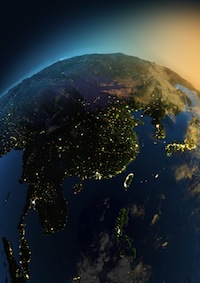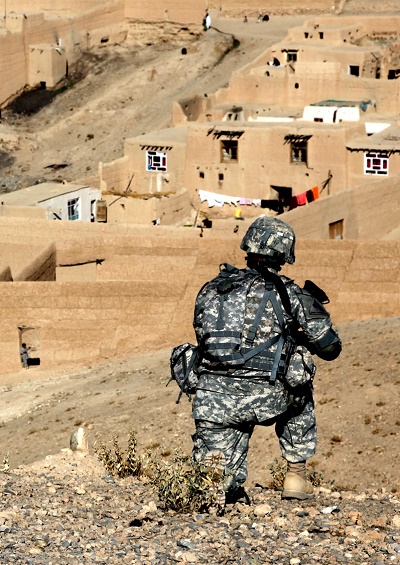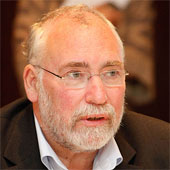President Obama’s Pirouettes in Asia
Did Japan, Korea et al. see any signs of U.S. President Obama’s Asia “pivot” in his recent trip?
May 1, 2014

Seven months ago, in October 2013 amid the U.S. government shutdown, President Obama decided to cancel his then-planned trips to Asia. Now the recent trip to Japan, South Korea, Malaysia and the Philippines has taken place. What is most remarkable is the degree to which it ended up being a non-event.
In many ways, with all the pleasantries exchanged and Mr. Obama’s inherent elegance, it resembled more the visit of royalty to his former colonies than the visit of a sitting U.S. President.
Describing what occurred as underscoring a “pivot” to Asia, as the Obama Administration is still eager to do, would imply some sort of strategic thrust and sense of direction. However, both of them were conspicuous by their absence. Describing the maneuver as performing “pirouettes” would seem more appropriate.
There was very little coverage by the international press. Of course, this is partly due to the fact that there are other big events taking place on the planet right now: the breakdown in the Palestinian-Israeli negotiations and the crisis in Ukraine, to name just two.
Yet, bearing in mind the global geopolitical and economic stakes in Asia Pacific, the trip must clearly be deemed a quite alarming flop.
Let us take the trip’s destinations in reverse order.
Philippines
It is in Manila, the final destination, that arguably the most concrete outcome of the pirouettes occurred, in the shape of a 10-year defense pact. The Philippines, a former American colony, just some 20 years ago ejected American troops stationed there. Now, they are being welcomed back.
President Obama was quoted as saying about the pact: “Our goal is not to counter China. Our goal is not to contain China.”
One can be forgiven for thinking that perhaps this is a case of he who protests too much actually confesses to the underlying charge. After all, China is decidedly also not among the TPP partners the U.S. side envisions.
Obama also implicitly chides China for resorting to “coercion and intimidation” vis-à-vis its neighbors. But what about the U.S. resorting to coercion and intimidation not just vis-à-vis its neighbors, but in far-away lands? Silence on that score, as you would expect.
The Chinese might also have a thing or two to say about what it feels like being the victim of coercion and intimidation in light of the country’s history of external oppression for over a century from the first Opium War (1839) to the Liberation (1949).
Malaysia
Before his stop in Manila, Obama was in Malaysia. Unlike the Philippines it is a negotiating member of TPP (Trans-Pacific Partnership), which is the economic arm of the pivot/pirouette, but over which issue (see below) little progress was made.
It was also a somewhat embarrassing time to be in Kuala Lumpur in light of the Malaysian government’s persecution of opposition leader Anwar Ibrahim on allegations of sodomy. Not a memorable visit on any count.
South Korea
The visit to South Korea occurred at a time of one of the country’s greatest recent tragedies with the deaths by drowning of hundreds of school pupils, and others, from the ferry disaster. It was not the proper occasion for detailed discussions; hence the subject, among others, of Korea joining TPP was set aside.
Apart from expressing his condolences, Obama also reassured Seoul that the United States would stand behind the South Koreans in case of conflict with the North. No great new development there. Having stood by the Japanese (see below) on the Diaoyu/Senkaku islands issue with China, he interestingly chose not to say anything about the Dokdo/Takeshima islands dispute between South Korea and Japan.
While both Japan and South Korea are military allies of the United States, tensions run high, thereby jeopardizing peace and stability in Northeast Asia. Obama’s various interventions may have brought the temperature down a degree or two. However, there is no solid outcome from his brief stay in Seoul on that count — or, it seems, any other.
Japan
The greatest disappointment was the visit to Tokyo. 2015 will mark the 70th anniversary of the end of the Pacific War. Within a few short years of the kamikaze attacks and the atom bombs on Hiroshima and Nagasaki, Japan and the United States became allies, with the U.S. in the role of Japan’s benevolent protector.
The principal reason back then? You guessed it, to contain China. The latter, of course, had been the U.S.’s World War II ally, but had in the meantime “fallen” to communism. Thusly, the ally (China) became the archenemy — and the erstwhile archenemy (Japan) became the principal ally.
As to the current territorial disputes, the Cairo declaration (1943), reaffirmed by Potsdam (1945), had made it explicitly clear that the Diaoyu (Senkaku in Japanese) islands were to be restored to China.
Even so, Obama asserted that they were covered in the U.S.-Japan Security Treaty (1952). Hence, should the Chinese choose to invade the islands, the United States would defend. A murky situation is made murkier and more perilous.
Territorial and defense matters aside, the great prize of what was heralded to be a pivotal visit from the leader of the world’s biggest economy to the world’s third-biggest was supposed to be an agreement between the two on TPP.
Finishing TPP?
Japan and the US are the two great whales in TPP, with the other ten members (Canada, Mexico, Peru, Chile, Australia, New Zealand, Vietnam, Malaysia, Singapore, and Brunei) medium or small sized fish.
An agreement between Japan and the United States is essential to concluding TPP. It should serve to entice other Asian nations, such as South Korea and Indonesia, to join — while containing China, of course.
Extremely intense negotiating between the countries’ respective trade ministers and schmoozing between President Obama and Prime Minister Abe over an outrageously expensive, sake-lubricated sushi dinner failed to achieve a breakthrough. (The main obstacle is agriculture.)
As if it had not happened
Though both sides said progress had been made – they would, wouldn’t they? – in reality, Obama left empty-handed.
Thus, the Obama trip – which after its earlier cancellation – has now happened; but it leaves the world pretty much in the same place as if it had not happened.
There is no greater clarity emerging from the trip for global trade policy. Nor is it clear that, for all the careful stage management and the mellifluous words being uttered, the issue of the U.S.’ commitment to the Asia Pacific region, its reliability, or more generally its global credibility, has been clarified.
And the Chinese? They are probably sorting out whether the Obama trip leaves them more contained — or less contained.
Takeaways
A “pivot” to Asia, which the Obama Administration still pursues, implies strategic thrust and a sense of direction.
What was visible in Asia during the Obama visit is better described as “pirouettes” than a "pivot"
With Obama’s inherent elegance, his visit to Asia resembled that of a royal prince to his former colonies.
China, the US’s WWII ally, became archenemy when it fell to communism. Japan, erstwhile archenemy, became an ally.
Read previous

Thank you, Mr. Putin!
April 29, 2014
